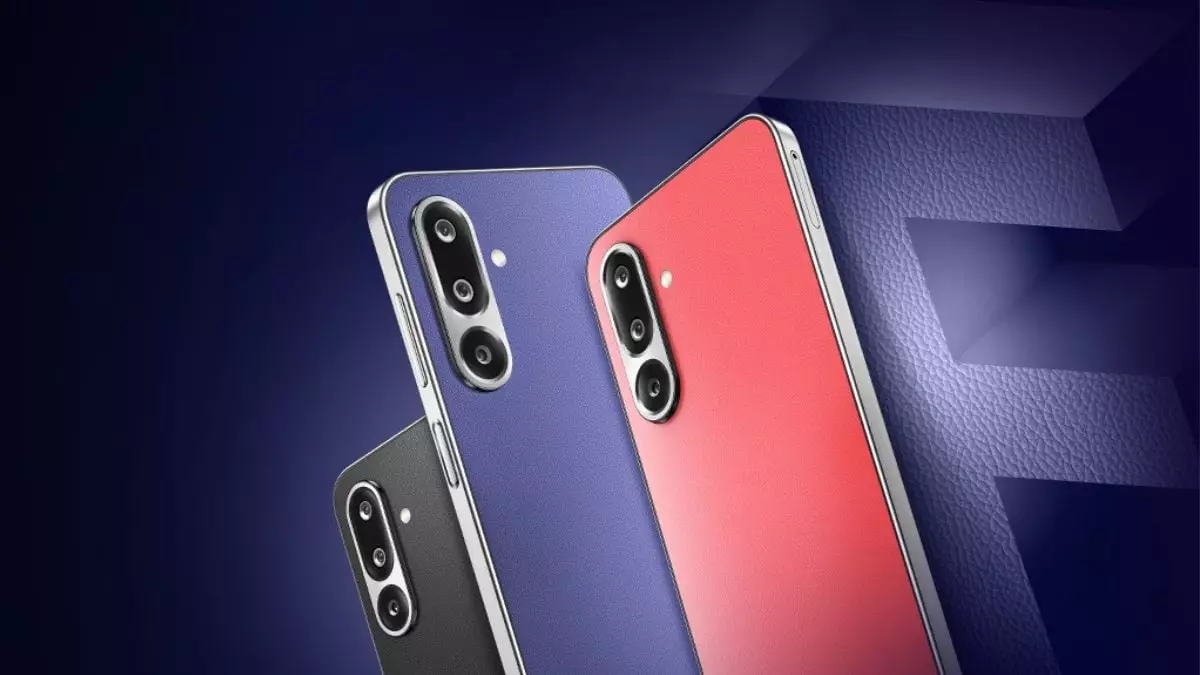The launch of the Samsung Galaxy F36 5G in India signals the company’s relentless pursuit of capturing budget-conscious consumers. Priced under Rs. 20,000, it appears to be an attractive entry point for those seeking a mid-range device. However, a closer look reveals that Samsung’s attempt to bundle premium features within this price bracket may be more about marketing smokescreen than genuine innovation. While Samsung boasts about its large Super AMOLED display, a hefty 5,000mAh battery, and a stylish leather finish, these features are now becoming standard in the sub-Rs. 20,000 segment. The question remains: is this device truly revolutionary, or merely a rehashed version of previous models dressed up to attract a fickle audience?
Overpromising and Underperforming?
The specifications of the Galaxy F36 5G seem impressive on paper—a 6.7-inch display with 120Hz refresh rate, a capable Exynos 1380 chipset, and a triple camera system. Yet, Samsung’s focus on quantity masks a lack of substantive innovation. The Exynos 1380 isn’t groundbreaking; it’s a mid-tier processor that struggles against competitors offering comparable or better performance at similar prices. What truly raises eyebrows is the company’s marketing of software features like Google’s Circle to Search and Gemini Live as “AI-powered” excesses that are, frankly, more about adding flashy buzzwords than offering meaningful user benefits. It’s a superficial attempt to embed AI within a device that, despite its promise, falls short on delivering a genuinely enhanced experience beyond surface-level features.
The Illusion of Longevity and Reliability
Samsung’s commitment to providing six generations of Android updates and seven years of security patches sounds impressive, but it borders on corporate virtue-signaling. These promises often don’t translate into meaningful user experience improvements and are often used as marketing tools to justify high price tags for what are essentially mid-range hardware components. The reality is that most users won’t live long enough to see all these updates, especially in a market where planned obsolescence remains rampant. Consequently, consumers are left in a cycle of expensive upgrades, making the company’s sustainability claims seem somewhat hypocritical. The faux “future-proofing” through software updates is a marketing ploy that doesn’t change the fundamental limitations of hardware aging quickly.
The Allure of Style Over Substance
Samsung’s focus on aesthetics—featuring a leather finish rear panel in eye-catching colors like Coral Red, Luxe Violet, and Onyx Black—appears to prioritize style over substance. While a premium look might entice youthful buyers, the tactile experience and durability of leather-like finishes remain questionable. More importantly, this emphasis on appearances distracts from critical issues like outright performance, battery longevity under real-world conditions, or the value provided by the camera system. The triple camera setup, boasting a 50-megapixel main sensor with optical image stabilization, is an expected feature in this segment, yet it doesn’t justify the device’s premium look if the actual photography experience falls flat under fluctuating lighting conditions.
The Hidden Cost of a “Budget” Flagship
Despite impressive specifications, the Galaxy F36 5G’s value proposition remains underwhelming. The device’s pricing—Rs. 17,499 for the basic model and Rs. 18,999 for the higher-end variant—places it in a competitive field filled with equally capable devices from brands like Realme and Xiaomi. These competitors often offer more aggressive pricing, better software customization, or even superior hardware components in certain categories. Samsung’s attempt to carve out a niche with a leather finish, a large display, and a suite of “AI” features feels more like a strategy of branding rather than substantial technological advancement. It raises a fundamental question: are consumers truly gaining value for their money, or are they simply buying into a polished veneer that conceals hardware limitations?
In an era where smartphone companies aggressively tout innovation, Samsung’s Galaxy F36 5G exemplifies the cynicism of surface-level upgrades and superficial features. While it might serve as a decent device for those who simply want a stylish, reliable phone without breaking the bank, it also exposes a concerning trend in the industry: brands prioritizing aesthetics, marketing buzzwords, and brand loyalty over genuine innovation and consumer-centric design. This device is less a leap forward and more a calculated move to cling to relevance in a fiercely competitive market. Buyers should approach with skepticism, recognizing that beneath the shiny exterior lies a device operating within the same limits as many other mid-range phones—perhaps even exaggerated by Samsung’s marketing rhetoric.


Leave a Reply